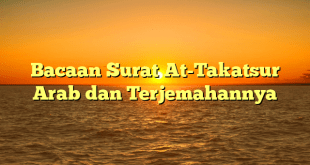WHAT IS DRAMA
Drama is an act or acts
(from Greek). While dramatic is the kind of essay that demonstrated a role in
behavior, expression and action. The play is another term of the drama in which
the password is confidential and Wara is the lesson. People who play a drama
called actors or the play.
Dramatic according to
its time can be divided in two types, namely a new drama and old drama.
New Drama/Modern Drama,
New drama is a drama that has the objective of providing education to the
general theme people of everyday human life.
Drama Classics, Long
drama is a fantasy drama which generally tells the story of the supernatural
power, or empire ISTANA life, the life of the gods, extraordinary events, and
others.
Various Kinds of
Dramatic Story Content Based on Content:
Comedy Drama, Comedy
drama is the drama that is funny and full of fun to tickle.
Dramatic Tragedy, Dramatic
tragedy is a sad story full of drama that misfortune.
Tragedy Drama Comedy, Tragedy-comedy
drama is drama that is sad and there’s funny.
Opera, Opera is a drama
that contains music and song.
Jokes/slapstick, The
joke is always acted drama that friend playful patterns to stimulate the
audience laughter.
Operetta, opera whose
story is shorter.
Pantomime, Pantomime is
a drama that is displayed in the form of body movements or gestures without
talks.
TABLAU, TABLAU is the
drama of a mime-like gestures accompanied by members of the perpetrator’s body
and facial gestures.
PASSIE,
PASSIE is a drama that contains elements of religion / religious.
Puppet, WAYANG is a
drama that is a puppet play puppet player. And others.
MORPHOLOGY
Morphology adopted by
different branches of science. Literally, morphology, meaning ‘knowledge of the
form’ (Morphos). Here are some of the science that uses the name of morphology:
Morphology (linguistics), knowledge
about morphemes in the language.
INSTRINSIK NOVEL ELEMENT
1). THEME: namely principal thoughts, ideas
or main idea, do with life values and behavior, can be explicitly symbolic, can
be directly implied, dominant / no, shallow / deep and cheap or even full of
meaning, the author of the factors that make up the topic this
2.) MANDATE: namely a moral message,
whether it’s a command, advice or input / appeals that are meaningful to the
intended reader
3.) Plot / plot: Set of events, forward
/ backward / combination of both, kasualitasnya how, chronologically ato not,
how to start, end, middle, what rangasangannya, what its climax, how ending?
4) disposition of figures: How nature,
protaginist / antagonist, starring / extras / supplementary. evil / Baek,
arrogant / low hati confidant / penghalang penggerak story?
5) Background: time, place, mood,
situation
6) VIEWPOINT: The technique of storytelling,
I / she / me / them / us / we, speakers of the story, the first major / minor /
second person / third, objective point of view
7.) FORCE LANGUAGES:
Formal non-formal, material / no, polite / rude, what the local language is
not, whether the transition alias translation, the existence majas.kiasan
 MEDIA PUSTAKA Berita Teknologi, Sains dan Edukasi
MEDIA PUSTAKA Berita Teknologi, Sains dan Edukasi

